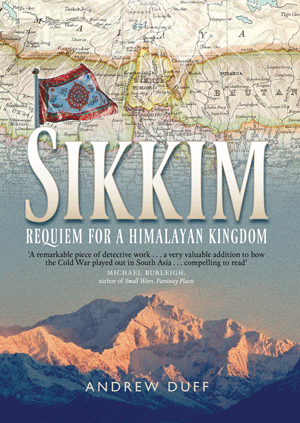“Way to Sonagachhi?” I asked tentatively, catching the eye of a helpful looking Calcuttan on a street corner. He gave me a wary sideways look.
“You want prostitutes and thing?”
“No, no,” I responded hurriedly. “It’s research… honestly…”
The man looked unconvinced. He waved his hand vaguely down the street. “Go straight a few minutes. Then left.” As I slunk away down the maze of lanes I reflected that the directions were about as useful as a single rupee in a brothel. Which somehow seemed appropriate.
Exploring Calcutta properly on foot takes time – and patience. I scratched below the surface on my visit here last year, but this time my footsteps have a more purposeful edge. As guides I am carrying a map and a guidebook from the pre-war period, both donated to the cause by a friend in Scotland, along with a wonderful walking guide written by the Bengali journalist Soumitra Das. And of course the perennial Lonely Planet.
Using four sources has its benefits and its drawbacks. The main benefit: an ability to drill deep into a neighbourhood, get thoroughly confused and lost, and emerge much the wiser. The drawback: trying to juggle four books on a busy Calcutta street while dodging human, canine and motorised traffic not to mention assorted bodies performing their morning ablutions. Not a task for the faint-hearted.
Underneath the main streets, the Calcutta metro forms a concealed spine running south to north and is a lifeline. It’s hard not to breathe a sigh of relief as you head down below, escaping the constant pressures of this overcrowded city. (The 2001 census recorded a figure of 13 million for the “urban agglomeration” which feels woefully low. It will be updated this year.)
Once on the expansive platform the lengthy underground trains act like great subterranean lungs, inhaling hundreds of passengers at each station until full to bursting and holding their breath through long tunnels before forcefully exhaling a mass of humans with great relief on the next platform.
Emerging above ground again I found myself at the bottom of two-mile long Chitpur Road. I took a tram to the top in preparation or my day’s exploration. (A word of caution to the unitiated – as suspension on the trams remains at bone-shaking levels, taking a seat is ill-advised and runs the risk of early onset of osteoporosis.)
Once at the end of the road I alighted and meandered slowly back down this wonderful spur that contains more life than many can take in a single day. In the lanes that snake between the main thoroughfares the jumbled architecture frequently gives way to ornate carvings on buildings or intricate metalwork. In some instances it is maintained to a remarkable standard; in others the decay is well past repair. Some of the houses of the Hindu bhadralok class led to this area quite appropriately being termed the City of Palaces. They happily coexisted side by side with dwellings of those at the other end of the social scale.
The fabled Sonagachhi is still home to ladies of the night, most of them today of Nepali origin. I quickly found myself lost in the back alleys, declining as politely as I could the preferred method of invitation – a gentle nod of the head towards the upper rooms of decrepit buildings. Like any big “urban agglomeration”, prostitution, drugs and gambling are available in this city without much delving under the surface.
There is much to be discovered here – it is a city that can only really be understood by extensive legwork. For three hours yesterday I benefitted from a sprightly 81-year-old man who adopted me for the afternoon dragging me along highways and byways at a pace far beyond that which I prefer, frequently halting the traffic with a bold step in to the road and a waft of his walking stick.
An extraordinary city with an extraordinary past that the residents appear to have neither the will nor the inclination to shake free from.
As for the shadow the past casts on the city’s future, that’s for another day.



